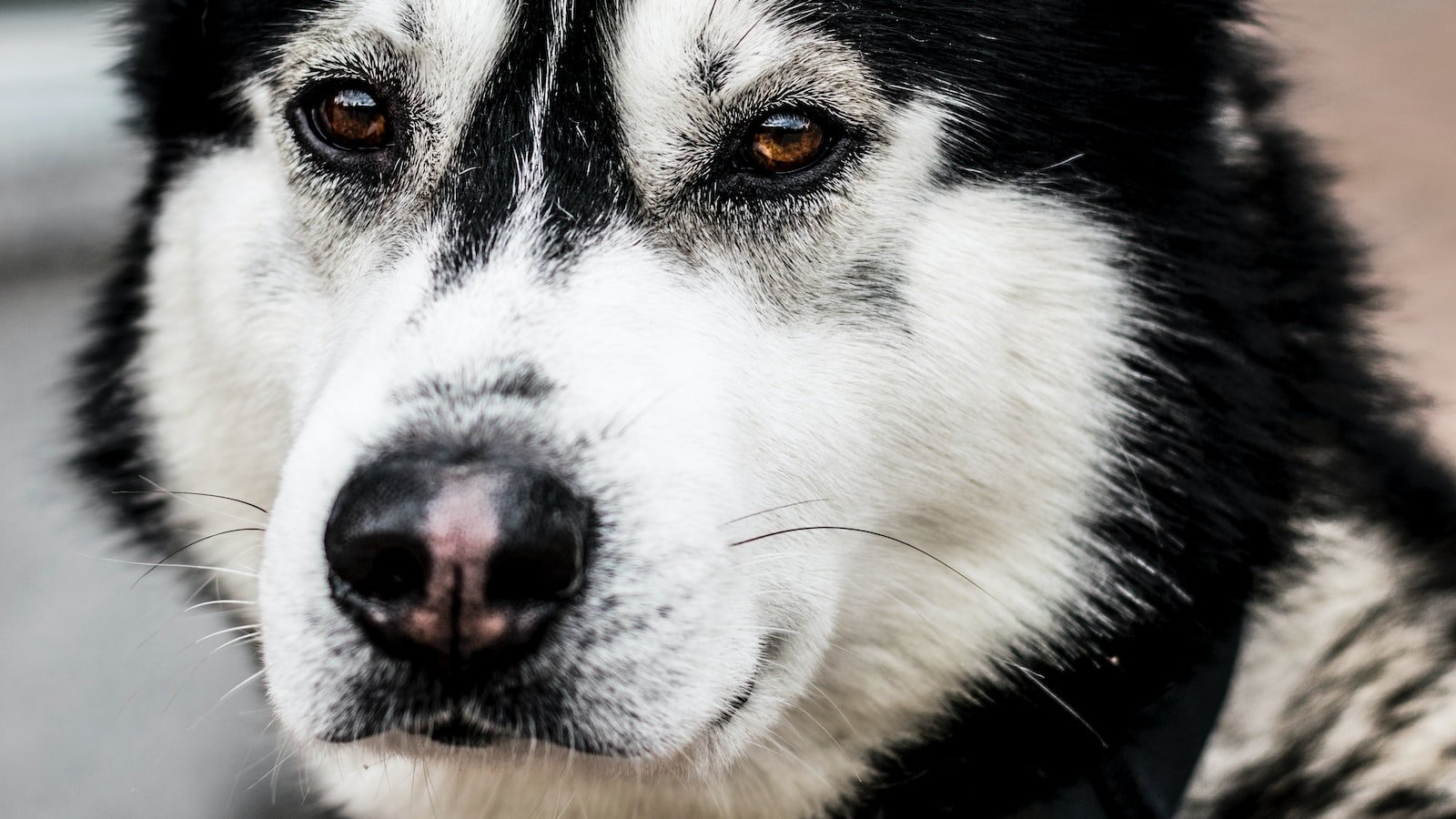Some dogs are born with a natural knack for strength and endurance that extends far beyond the bounds of a casual walk or fetch session. These extraordinary canines possess a unique blend of power and determination, yearning for a challenge that pushes their physical limits to the absolute maximum. Enter the captivating world of weight pulling—a sport that tests and hones the brute strength and unwavering stamina of our four-legged companions. In this article, we delve into the fascinating realm of dog training for weight pulling, exploring the invaluable benefits it brings to both the physical and mental well-being of these remarkable creatures. So, buckle up and prepare to witness the awe-inspiring potential of dogs as they unleash their Herculean might on the weight pulling arena.
Table of Contents
- Introduction: Understanding the World of Dog Weight Pulling
- Training Regimen: Building Strength and Endurance for Weight Pulling
- Nutrition and Diet: Fueling Optimal Performance in Weight Pulling Dogs
- Preventing Injuries: Essential Techniques and Tips for Dog Weight Pulling
- Competition Preparation: Strategies for Success in Dog Weight Pulling
- Q&A
- Wrapping Up

Introduction: Understanding the World of Dog Weight Pulling
Welcome to the captivating realm of dog weight pulling! In this unique sport, dogs showcase their incredible strength, determination, and teamwork, leaving both spectators and participants in awe. Whether you’re new to the world of weight pulling or a seasoned enthusiast, this introductory guide will provide you with valuable insights into this fascinating canine activity.
Dog weight pulling is an ancient practice that has evolved into a modern-day competitive event. Essentially, it involves dogs using their sheer power to pull a sled, cart, or weighted apparatus across a defined distance within a specified time. This exhilarating spectacle puts the dogs’ muscular prowess to the test, highlighting their raw strength and unyielding spirit.
Throughout this guide, we’ll delve into the rules, equipment, training techniques, and the fine balance between challenge and safety that characterizes the world of dog weight pulling. Prepare to discover a wealth of knowledge that will deepen your appreciation for both the sport and the remarkable canine athletes that partake in this thrilling pursuit.

Training Regimen: Building Strength and Endurance for Weight Pulling
Embarking on a weight pulling journey requires a training regimen that focuses on building both strength and endurance. Whether you and your furry companion are preparing for a competition or simply want to maximize your pulling potential, following a well-rounded training routine is essential.
Strength Training:
- Start by incorporating exercises that target the muscles used in weight pulling, such as the rear legs, shoulders, and core.
- Include exercises like squats, lunges, and deadlifts to strengthen the legs, while also enhancing overall stability and balance.
- Utilize resistance bands or incorporate weight sleds to simulate the pulling motion, gradually increasing the load as your strength improves.
- Don’t forget to focus on upper body strength with exercises like push-ups, pull-ups, and overhead presses to ensure your entire body is prepared for the demanding task.
Endurance Training:
- Incorporate regular cardio exercises such as running, swimming, or cycling into your training routine to improve your cardiovascular fitness, which is crucial for sustained pulling efforts.
- Include interval training to mimic the bursts of energy required during weight pulling. Alternate between high-intensity exercises and short recovery periods to challenge and improve your endurance levels.
- Gradually increase the duration and intensity of your cardio sessions over time to enhance your stamina and ability to sustain prolonged pulling efforts.
Remember, consistency is key when it comes to building strength and endurance. Always warm up properly before each session and listen to your body to avoid injuries. Take breaks when needed, hydrate well, and fuel your body with a balanced diet to support your training efforts. With dedication and perseverance, you and your four-legged partner will be ready to conquer any weight pulling challenge!

Nutrition and Diet: Fueling Optimal Performance in Weight Pulling Dogs
In order to achieve and maintain optimal performance in weight pulling dogs, proper nutrition and diet are essential. A well-balanced diet not only provides the necessary fuel for intense physical exertion but also supports muscle growth and recovery. Here are some key considerations when it comes to fueling your weight pulling dog:
- High-quality protein: Protein is the building block for strong muscles, and weight pulling dogs require a protein-rich diet to support their intense workouts. Incorporate lean meats, such as chicken, turkey, or fish, into their meals. Additionally, consider adding high-quality protein supplements to ensure they are getting an adequate amount.
- Complex carbohydrates: Carbohydrates are a vital energy source for weight pulling dogs. Opt for complex carbohydrates, such as sweet potatoes, brown rice, and oats, which provide a steady release of energy. Avoid simple carbohydrates and sugary treats that may cause energy crashes.
- Healthy fats: Including healthy fats in their diet can support joint health and provide essential fatty acids. Incorporate sources like salmon, flaxseed oil, or coconut oil into their meals. Remember to offer these in moderation as excess fat can lead to weight gain.
- Vitamins and minerals: Just like humans, weight pulling dogs need a variety of essential vitamins and minerals in their diet. Providing a balanced mix of fruits, vegetables, and supplements can help ensure they receive the necessary nutrients for optimal health and performance.
- Hydration: Always keep your weight pulling dog hydrated before, during, and after their workouts. Fresh water should always be available, and consider incorporating electrolyte supplements into their routine to maintain proper hydration levels.
By providing your weight pulling dog with a well-rounded and nutritious diet, you can fuel their performance, enhance their endurance, and promote their overall well-being. Remember to consult with a veterinarian or canine nutritionist to tailor their diet to their specific needs and monitor their progress closely.
Preventing Injuries: Essential Techniques and Tips for Dog Weight Pulling
Dog weight pulling can be a challenging and exciting sport for both you and your furry friend. However, it is crucial to prioritize preventing injuries to ensure the well-being and safety of your dog. Here are some essential techniques and tips to consider:
Proper Warm-up: Just like humans, dogs need to warm up their muscles before engaging in any strenuous activity. Start with a brisk walk or light jog to increase blood flow and prepare their muscles for the weight pulling session. This will help prevent muscle strains and injuries.
Use a Proper Harness: Investing in a high-quality, well-fitting harness specifically designed for weight pulling is essential. The harness should distribute the weight evenly across your dog’s body, avoiding unnecessary pressure on specific areas. Adjustable harnesses are ideal to tailor the fit to your dog’s individual physique.
Train Gradually: It’s important to start with lighter weights and gradually increase the load as your dog becomes stronger and more experienced. Pushing your dog too hard too quickly can lead to injuries and burnout. A progressive and gradual training program will allow your dog to build strength and endurance steadily.
Monitor Your Dog’s Body Language: Pay close attention to your dog’s body language during weight pulling sessions. If you notice signs of discomfort, fatigue, or pain, it’s crucial to stop the activity immediately. Your dog’s well-being should always take precedence, so be ready to adjust your training accordingly.
- Nutrition and Hydration: Proper nutrition and hydration are fundamental for your dog’s overall health and performance in weight pulling. Ensure they have a well-balanced diet, appropriate for their activity level, and always have fresh water available during training and competitions.
- Veterinary Check-ups: Regular visits to the vet are essential to monitor your dog’s health and identify any underlying issues that could affect their weight pulling performance. Your vet can also provide guidance on your dog’s fitness level and any precautions you should take.
- Cool Down: After each weight pulling session, allow your dog to cool down gradually. This can be done through a gentle walk or light stretching exercises. Cooling down helps prevent muscle stiffness and aids in recovery.
By following these essential techniques and tips, you can ensure a safe and enjoyable weight pulling experience for both you and your furry friend. Remember, the key is to prioritize your dog’s well-being and listen to their needs throughout the training process.
Competition Preparation: Strategies for Success in Dog Weight Pulling
Training and Conditioning
One of the key strategies for achieving success in dog weight pulling competitions is through training and conditioning your dog. Consistent training sessions will help build your dog’s strength and endurance, allowing them to pull heavier loads. Focus on exercises that target the specific muscles used in weight pulling, such as sled pulling, resistance training, and uphill sprints. Incorporating different training techniques such as interval training and cross-training can also help enhance your dog’s overall fitness level.
Diet and Nutrition
A balanced diet plays a crucial role in preparing your dog for weight pulling competitions. Proper nutrition will ensure that your dog has the energy and stamina necessary to perform at their best. Consult with a veterinarian or a professional dog nutritionist to create a customized diet plan tailored to your dog’s specific needs. Include a mix of high-quality protein, carbohydrates, and healthy fats in their meals. Additionally, consider providing appropriate supplements to support their joint health, muscle recovery, and overall well-being.
Mental Preparation and Bonding
Aside from physical training, mental preparation is equally important for success in dog weight pulling competitions. Introduce your dog to competition environments and different surfaces to improve their confidence and adaptability. Engage in bonding activities with your dog to foster a deeper connection and trust, as a strong handler-dog relationship can significantly impact performance. Using positive reinforcement techniques and rewards can boost your dog’s motivation and enthusiasm during training and competitions.
Q&A
What is weight pulling for dogs?
Weight pulling is a competitive sport where dogs pull or drag heavy weights across a designated distance. It helps develop a dog’s strength and stamina, while also providing mental stimulation and a positive outlet for their energy.
What type of dogs are suitable for weight pulling?
Any breed or mix can participate in weight pulling, but it is particularly well-suited for breeds with a strong working or herding background. Breeds like Siberian Huskies, American Pit Bull Terriers, and Alaskan Malamutes excel in this activity due to their natural drive, muscular build, and endurance.
Is weight pulling safe for dogs?
When done correctly and under professional supervision, weight pulling is generally safe for dogs. Proper conditioning, warm-up exercises, and the use of well-fitted harnesses are crucial to prevent strain or injury. Regular veterinary check-ups and ensuring the dog’s overall health and fitness are also important.
How should I start training my dog for weight pulling?
Begin by teaching your dog basic obedience commands like “sit,” “stay,” and “heel.” Once they have a solid foundation, gradually introduce them to pulling light loads using a sled, cart, or specially designed weight pulling equipment. Be patient, use positive reinforcement, and always prioritize your dog’s comfort and wellbeing during training.
What equipment do I need for weight pulling?
For weight pulling, you will need a well-fitted weight pulling harness that distributes the weight evenly and does not restrict the dog’s movement. Additionally, a sled, cart, or special sled-like apparatus, along with appropriate weights, will be necessary to train and compete in this activity.
Can weight pulling be harmful to my dog’s joints or muscles?
As long as weight pulling is done responsibly and in moderation, it should not cause harm to a dog’s joints or muscles. It is important to gradually increase the weight and intensity of the exercise over time, allowing their body to adapt and build strength. Regular breaks, proper warm-up and cool-down routines, and avoiding excessive strain are also crucial for minimizing the risk of injury.
What are the benefits of weight pulling for dogs?
Weight pulling promotes physical fitness, builds muscles, and enhances a dog’s endurance. It can also be a great outlet for their energy and drive, helping alleviate behavioral issues caused by pent-up energy. Additionally, weight pulling strengthens the bond between dog and owner, as it requires trust, teamwork, and consistent training.
Wrapping Up
As we gracefully conclude our exploration into the intriguing world of dog training for weight pulling, we are left in awe of the immense strength and unwavering stamina these remarkable canines possess. From their glistening coats to their determined eyes, these extraordinary four-legged athletes embody the essence of sheer power and dedication.
Throughout this article, we have shed light on the dynamic and meticulous training regimen required to transform your beloved pooch into a weight-pulling champion. We have witnessed their journey from being mere companions to becoming awe-inspiring competitors, capable of moving unimaginable loads with grace and tenacity.
With each step along the way, we have witnessed the importance of creating a solid foundation of obedience, trust, and positive reinforcement. Yet, it is their insatiable drive and unwavering discipline that sets these remarkable dogs apart from the rest.
The beauty of weight pulling lies not only in its physical challenges but also in the unwavering bond it fosters between handlers and their four-legged partners. It is through the symbiotic dance between human and canine that greatness is achieved, as the two form an unbreakable connection built on trust and mutual understanding.
As we bid farewell to this chapter of our journey, we invite you to embark on your own enchanting adventure into the realm of dog training for weight pulling. Whether you choose to simply witness these Herculean feats or aspire to guide your own loyal companion to triumph, the rewards of this incredible sport are endless.
So, gather your enthusiasm, tighten the proverbial harness, and set forth on a path of discovery, forging an unbreakable bond with your furry comrade. Together, you will cross the threshold of possibility, pushing the boundaries of strength and stamina, and experiencing a deep sense of fulfillment that only the world of weight pulling can offer.
Embrace the challenge, embrace the strength, and embrace the extraordinary journey of dog training for weight pulling. May your paths be filled with triumph, unity, and boundless possibilities.
As an affiliate, my content may feature links to products I personally use and recommend. By taking action, like subscribing or making a purchase, you’ll be supporting my work and fueling my taco cravings at the same time. Win-win, right?
Want to read more? Check out our Affiliate Disclosure page.